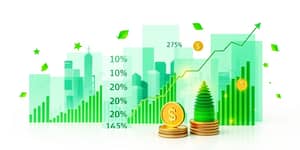
As climate concerns move from the fringes to the forefront of global discourse, investors are seeking ways to support sustainability without sacrificing diversification or performance. One powerful yet accessible strategy is to harness the potential of low-carbon ETFs. These funds enable individuals to align their portfolios with climate goals by passively investing in companies with reduced greenhouse gas emissions, all while capturing broad market exposure.
Low-carbon ETFs have surged in popularity as part of the broader ESG revolution. By focusing on firms with reduced fossil fuel reserves exposure and proactive decarbonization plans, these vehicles offer more than just green credentials. They also deliver tangible financial benefits.
Key advantages include:
Beyond these benefits, low-carbon ETFs empower investors to align financial goals with values, ensuring that every dollar supports a pathway to net-zero.
Not all low-carbon ETFs are created equal. Their construction relies on rigorous index methodologies designed to tilt allocations toward cleaner businesses. Two primary approaches prevail:
Methodological transparency is crucial. Investors should review whether a fund merely excludes high-emission offenders or proactively seeks climate leaders.
Low-carbon ETFs span global, regional, and thematic strategies. Some follow Paris-Aligned Benchmarks (PABs), explicitly aiming to meet the objectives of the Paris Agreement by reallocating capital toward transition leaders. Others may focus solely on renewable energy or green innovation.
Most of these funds achieve 70%+ lower carbon intensities than market average, offering a dramatic climate advantage without deviating sharply from benchmark returns.
Choosing an ETF demands careful scrutiny of several factors beyond headline carbon reductions. Consider the following:
Additionally, assess whether non-climate ESG factors matter to you. Some low-carbon funds may overlook social or governance dimensions in pursuit of emissions metrics.
Low-carbon ETFs can serve as a core equity allocation, replacing or complementing broad-market funds. Here are key strategies:
For investors seeking maximum impact, a blended allocation of low-carbon, clean-tech, and ESG leaders can deliver long-term resilience and growth potential while staying true to sustainability values.
No investment strategy is flawless. Low-carbon ETFs face certain drawbacks that warrant attention:
First, they possess a narrow climate-focused scope that may miss broader ESG concerns. Second, these funds rely heavily on the quality of corporate carbon disclosures, which can vary across regions and industries. Third, rules-based indexing can overlook emerging low-carbon innovators or fail to engage companies directly.
The momentum behind sustainable investing continues to accelerate. Regulatory bodies worldwide are demanding greater transparency on climate risks, while asset managers innovate new net-zero and Paris-aligned products. Enhanced data availability and scenario analysis tools will further refine index methodologies.
Looking ahead, investors can expect:
• More sophisticated transition-readiness indices that combine science-based targets with real-time emissions monitoring.
• Expanded thematic offerings, integrating circular economy and biodiversity metrics alongside carbon reductions.
• Heightened corporate engagement strategies embedded within passive vehicles, ensuring that capital allocation signals drive genuine decarbonization efforts.
By embracing low-carbon ETFs today, investors not only position their portfolios for evolving market trends but also contribute to a global transition toward a sustainable, low-carbon future.
References













